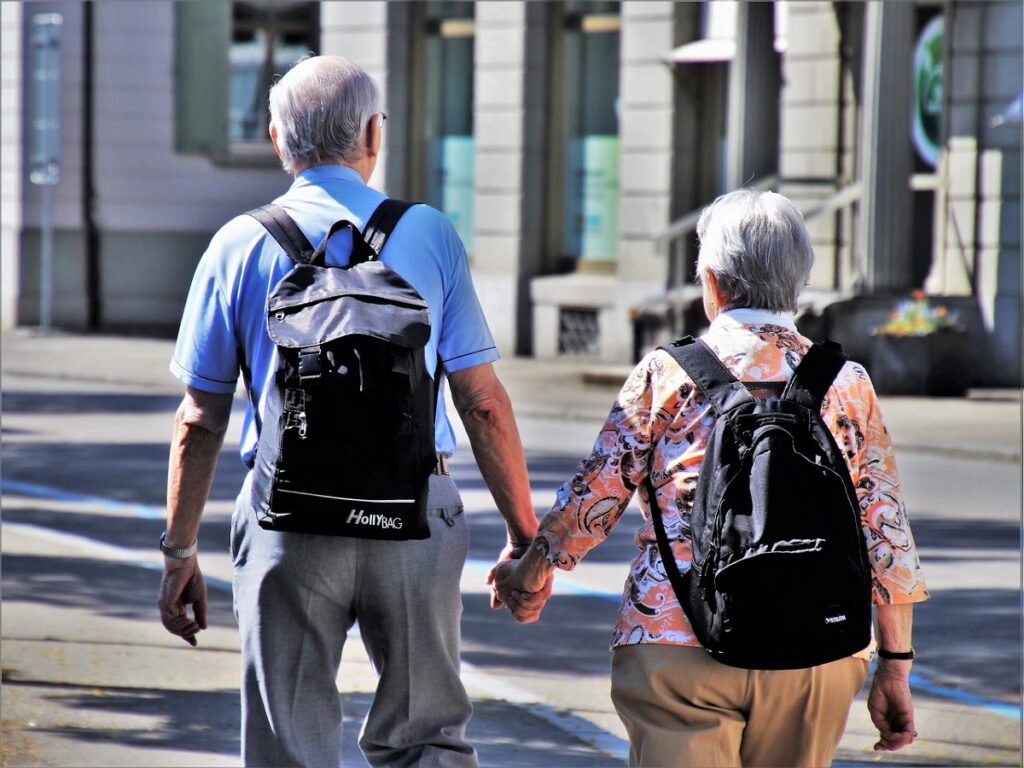Need to travel during the pandemic? If you’ve been quarantining or social distancing for the past year, you’re probably eager to get back out there to see the world. But why is traveling not safe during the COVID-19 pandemic? Put simply, the virus is more likely to be spread when people travel outside their hometown, since they’ll be interacting with others and possibly contracting and/or spreading the virus.
COVID symptoms in elderly people have shown to be particularly dangerous (and often deadly). However, if you’re required to travel, or you have already been vaccinated as a senior citizen, here’s some advice on traveling during the pandemic in a way that will keep you and others around you safe.
What are some recommendations for travelers during the COVID-19 pandemic?
There are lots of factors to consider if you’re thinking about traveling. You might be wondering, “Do I need to get tested before I travel during the COVID-19 pandemic?” The answer is yes. Get a COVID test done between one to three days before you travel, as the Centers for Disease Control (CDC) recommends. If you test positive, you should cancel all plans and not travel at all.
If you receive a negative test result or are fully vaccinated, you should do the following.
Check travel restrictions
Local and state governments may have restrictions in place (like testing requirements or stay-at-home orders), so check out the health department where you’ll be traveling to make sure you can make it to where you want to go. These types of restrictions can change very quickly, so you might have to be flexible with your plans. Most of these restrictions are put in place for all travelers, so being a senior citizen won’t necessarily get you out of following any regulations.
By air
Check with the airline you’ll be flying with to see what their specific requirements are. You might need a COVID test in the location where you’ll be arriving. Remember that flying may increase your risk of contracting the virus because of being unable to socially distance, as well as having to navigate busy airports.

By bus or train
It can be hard to socially distance with limited space, which may increase your risk. Try to limit contact with other people as much as possible (en route and in depots or stations) and wear your mask at all times (which is a requirement right now).
By car
You’ll need to be careful if you’re making stops for gas, food, bathroom breaks, etc., since you’ll likely come into contact with people or frequently touched surfaces. Try to limit how often you make stops to decrease your risk of being around other people outside your household.
You could face detours or travel restrictions in the areas you’re traveling through as well, so make sure to have GPS handy. If you have a disabled parking permit, bring it with you so you’ll have access to convenient parking places during your travels. If you don’t, you can obtain one through Disabled Parking’s online consultation process.
By RV
You won’t have to stop as much for food or restrooms, but getting gas and stopping at RV parks can put you in close contact with other people (which increases your risk).
Wear a mask
This is perhaps the best way to keep yourself safe from contracting or spreading COVID. Keep your mask on (over your nose and mouth) whenever you’re in public settings or when you are around people outside of your household. Masks are currently required on most public transportation within the US.
Stay at least six feet away from people
Keep at least six feet (two arm lengths) away from people not from your household, both indoors and outdoors. Avoid crowds whenever possible.
Wash your hands and use hand sanitizer
Keep yourself germ-free by frequently washing your hands for at least 20 seconds and/or using hand sanitizer (with at least 60% alcohol). Also try to avoid touching your eyes, nose, and mouth.

Bring extra supplies
Make sure to bring extra masks, hand sanitizer, and other supplies with you when you pack so you’ll be prepared for your whole trip. It’s also a good idea to bring disinfectant wipes to use on commonly touched surfaces (like in gas stations, public restrooms, or on a plane).
Stock up on food and drinks
Bring your own food with you on your travels whenever possible. This can cut down on your need to enter food establishments where people are gathering.
Be safe when visiting people
If you’re staying with friends or family when you travel, keep vigilant with your mask-wearing (even while you’re outdoors). You can remove your mask for eating or sleeping, but it’s a good idea to still try to stay at least six feet apart at all times. Improve ventilation in the home by opening windows or doors or by putting central air conditioning or heating on continuous circulation. Spend time together outdoors if possible.
When you arrive home, it’s a good idea to get a viral test done at least three to five days after your trip. Even if your test is negative, to play it safe, stay home and self-quarantine for a full seven to fourteen days after you get back.
As a senior, you’re in a high-risk group for COVID, so try not to travel during the pandemic. However, if it’s a necessary trip or if you can do it in a completely safe way, then make sure to follow these tips!
